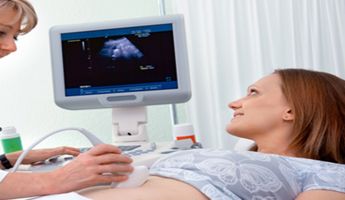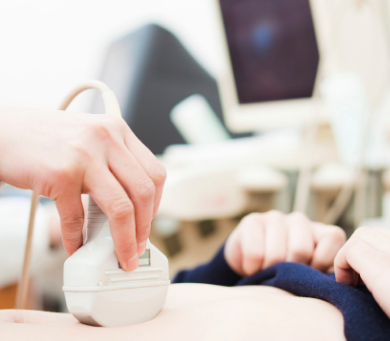Abdominal Ultrasound in Metro Manila
Search and Compare the Best Clinics and Doctors at the Lowest Prices for Abdominal Ultrasound in Metro Manila

Find the best clinics for Abdominal Ultrasound in Metro Manila
With Medijump you can browse 6 facilities offering Abdominal Ultrasound procedures in Metro Manila. The cheapest price available is $11 in Agusan del Norte. And for the cheapest price globally, prices start from $4 in Indonesia.
Abdominal Ultrasound in Philippines
Price: $ 11
Abdominal Ultrasound in Agusan del Norte
Price: $ 11
Indonesia offers the best prices Worldwide
Price: $ 4
Pedia Gastro in Our Lady of Lourdes Hospital, located in Manila, Metro Manila, Philippines offers patients Abdominal Ultrasound procedures among its total of 157 available procedures, across 5 different specialties. Currently, there's no pricing information for Abdominal Ultrasound procedures at Pedia Gastro in Our Lady of Lourdes Hospital, as all prices are available on request only, whilst the national average price is approximately $11. All procedures and treatments are undertaken by the lead specialist at the Hospital, and they are not accredited by any recognized accreditations institutes
From 3 verified reviews
wilfred cu, 17 November 2018
Very accessible and courteous staff
From 133 verified reviews
Mari Delos Santos, 16 April 2020
The main lobby will give you a feeling of being in a resort or hotel lobby. The newly open Central Park will be an extra treat, an amenity area that will give patients and visitors the feeling of being at home in their own garden. Doctors here are the best in the country. State of the art facilities and high tech medical equipment. How I wish every Filipino can experience the medical care and assistance at Thé Medical City.❤️ March 4, 2020, I went to the Ambulatory Service Center- as usual long line but patients are comfortably seated and patiently waiting. I have been on food and water fasting for my blood extraction. Not to over fast I approached the lady at the counter 4, to let her know of my situation. She was so quick in attending to my concern and never ask for anything, not even my ID or HMO. She accompanied me at the blood extraction area and everything I need was well taken cared of because of her. Thank you very much Ms. Maria Concepcion Calayan Golla for your kind assistance and compassion. Keep up the excellent work. May your tribe increase. All the best!❤️
From 4 verified reviews
Rest Lee Hernandez, 27 February 2018
Well accomodating. Mabilis ang process. May available na Doctors unlike other branches na you have to wait long for the doctor to come.
Dr. Pearlie Siy-Salazar OB-Gyn and Ultrasound Clinic, located in Manila, Metro Manila, Philippines offers patients Abdominal Ultrasound procedures among its total of 47 available procedures, across 4 different specialties. Currently, there's no pricing information for Abdominal Ultrasound procedures at Dr. Pearlie Siy-Salazar OB-Gyn and Ultrasound Clinic, as all prices are available on request only, whilst the national average price is approximately $11. All procedures and treatments are undertaken by the lead specialist at the Clinic, and they are not accredited by any recognized accreditations institutes
The Medical City - SM Marikina, located in Marikina, Metro Manila, Philippines offers patients Abdominal Ultrasound procedures among its total of 9 available procedures, across 4 different specialties. Currently, there's no pricing information for Abdominal Ultrasound procedures at The Medical City - SM Marikina, as all prices are available on request only, whilst the national average price is approximately $11. All procedures and treatments are undertaken by just a small team of specialists, with 3 in total at the Clinic, and they have multiple recognized accreditations, including: PSO-HNS - Philippine Society of Otolaryngology Head & Neck SurgeryPAFPARS - Philippine Academy of Facial Plastic Aesthetic and Reconstructive Surgery
- Home
- Philippines
- Metro Manila
WHY US?
At Medijump, we're making medical easy. You can search, compare, discuss, and book your medical all in one place. We open the door to the best medical providers worldwide, saving you time and energy along the way, and it's all for FREE, no hidden fees, and no price markups guaranteed. So what are you waiting for?

Free

Best Price

Widest Selection

Risk-Free
What do you need to know about Abdominal Ultrasound in Metro Manila?

The Abdominal Ultrasound, commonly referred to as an abdominal ultrasound, is a safe and non-intrusive imaging method that uses sound waves to generate detailed images of your abdominal organs. This radiation-free procedure is pivotal in diagnosing and monitoring conditions linked to vital organs like the liver, gallbladder, spleen, pancreas, kidneys, bladder, and abdominal aorta. Familiarizing yourself with the efficacy and safety of this procedure can help dispel any uncertainties you might harbor.
In Metro Manila, be assured that this procedure is carried out by seasoned professionals leveraging the latest technology. Note that you may need to fast for several hours before the procedure as undigested food could hinder the sound waves, affecting the image clarity. If you have chronic health conditions, a frank discussion with your healthcare provider will ensure necessary accommodations and a successful procedure.
What is the cost of Abdominal Ultrasound in Metro Manila?
The expenditure for the Abdominal Ultrasound in Metro Manila can vary, influenced by factors such as the complexity of the examination, the type of care required, and your health insurance coverage. It's crucial to remember that most insurance providers generally cover this procedure, but it's wise to confirm this with your provider. If you lack insurance coverage, don't worry, many clinics offer financial assistance options.
What does the Abdominal Ultrasound Procedure involve in Metro Manila?
The Abdominal Ultrasound, or abdominal ultrasound, is a process where an experienced technician applies a thin layer of gel to your abdomen. A handheld device, a transducer, is then glided over the area, emitting sound waves that bounce off your body's tissues and organs, creating echoes. These echoes transform into images on a monitor, offering a real-time glimpse into your internal structures. A thorough comprehension of the procedure can help mitigate any apprehensions.
In Metro Manila, this procedure is conducted by adept healthcare professionals in a controlled environment. Typically taking less than an hour, the procedure should cause no discomfort. It's important to maintain open communication with your healthcare provider during the procedure and report any discomfort. Occasionally, you may be requested to hold your breath or adjust your position to improve imaging of certain areas.
How long should I plan to stay in Metro Manila for a Abdominal Ultrasound Procedure?
The Abdominal Ultrasound, or abdominal ultrasound, is a rapid and efficient process, usually wrapping up within an hour. Although it's an outpatient procedure, meaning you're free to leave shortly after its completion, it's prudent to allot time for preparation and post-procedure consultation with your healthcare provider. You can effectively plan by considering the time required for these steps.
Typically, there's no obligatory period for you to stay in Metro Manila post a Abdominal Ultrasound. But, if subsequent appointments or additional tests are recommended, factor these into your itinerary. Additionally, it would be sensible to consider any potential travel constraints or mandates due to public health regulations in Metro Manila.
What's the recover period for Abdominal Ultrasound Procedures in Metro Manila?
Arguably, one of the most appealing aspects of the Abdominal Ultrasound or abdominal ultrasound, is the nil recovery time. This non-intrusive, painless procedure allows you to immediately resume your regular routine. However, acquainting yourself with potential post-procedure scenarios and possible side effects beforehand is a smart move, bolstering your comfort and confidence.
Post-procedure in Metro Manila, your healthcare provider will interpret the results with you and provide guidance on any necessary follow-up steps. As this procedure typically falls under outpatient care, you're free to leave shortly after its completion. As always, maintaining regular communication with your healthcare provider and strictly following their advice is vital for ongoing health and wellness.
What is the success rate for Abdominal Ultrasound Procedures in Metro Manila?
The Abdominal Ultrasound, also known as an abdominal ultrasound, has an impressive track record of delivering clear, detailed images of the abdominal organs. This real-time imaging technique, which is free from radiation exposure, boasts a high success rate. The accuracy of the images significantly aids healthcare providers in diagnosing and monitoring a wide range of health conditions.
In Metro Manila, this procedure is performed by seasoned professionals using advanced technology, thus ensuring its high success rate. Patient cooperation, such as adhering to instructions for fasting when required, also plays an integral role in the procedure's success. Hence, it's paramount to follow all given directions and maintain an open line of communication with your healthcare provider.
Are there Alternatives to Abdominal Ultrasound Procedures in Metro Manila?
While the Abdominal Ultrasound or abdominal ultrasound is a widely used and effective diagnostic tool, there are alternative imaging procedures available. CT scans and MRIs, for instance, provide another means of visualizing the body's internal structures. These alternatives, however, may expose the patient to ionizing radiation, unlike an ultrasound. It's worthwhile to explore these alternative procedures to make an informed decision about your care.
In Metro Manila, your healthcare provider will discuss these alternatives with you, considering your specific medical condition and needs. They will consider factors such as the nature of the condition, your medical history, and potential risks to suggest the most suitable option. Remember, the best course of action is to engage in a thorough discussion with your healthcare provider about all possible options before making a decision.
Whilst the information presented here has been accurately sourced and verified by a medical professional for its accuracy, it is still advised to consult with your doctor before pursuing a medical treatment at one of the listed medical providers
No Time?
Tell us what you're looking for and we'll reachout to the top clinics all at once
Enquire Now

Popular Procedures in Metro Manila
Prices Start From $42

Prices Start From $23

Prices Start From $11

Prices Start From $11

Recommended Medical Centers in Metro Manila for Abdominal Ultrasound

- Interpreter services
- Translation service
- Religious facilities
- Medical records transfer
- Medical travel insurance
- Health insurance coordination
- TV in the room
- Safe in the room
- Phone in the room
- Private rooms for patients available

- Interpreter services
- Translation service
- Religious facilities
- Medical records transfer
- Medical travel insurance
- Health insurance coordination
- TV in the room
- Safe in the room
- Phone in the room
- Private rooms for patients available

- Interpreter services
- Translation service
- Religious facilities
- Medical records transfer
- Medical travel insurance
- Health insurance coordination
- TV in the room
- Safe in the room
- Phone in the room
- Private rooms for patients available

- Interpreter services
- Translation service
- Religious facilities
- Medical records transfer
- Medical travel insurance
- Health insurance coordination
- TV in the room
- Safe in the room
- Phone in the room
- Private rooms for patients available

- Interpreter services
- Translation service
- Religious facilities
- Medical records transfer
- Medical travel insurance
- Health insurance coordination
- TV in the room
- Safe in the room
- Phone in the room
- Private rooms for patients available

- Interpreter services
- Translation service
- Religious facilities
- Medical records transfer
- Medical travel insurance
- Health insurance coordination
- TV in the room
- Safe in the room
- Phone in the room
- Private rooms for patients available

- Interpreter services
- Translation service
- Religious facilities
- Medical records transfer
- Medical travel insurance
- Health insurance coordination
- TV in the room
- Safe in the room
- Phone in the room
- Private rooms for patients available

- Interpreter services
- Translation service
- Religious facilities
- Medical records transfer
- Medical travel insurance
- Health insurance coordination
- TV in the room
- Safe in the room
- Phone in the room
- Private rooms for patients available

- Interpreter services
- Translation service
- Religious facilities
- Medical records transfer
- Medical travel insurance
- Health insurance coordination
- TV in the room
- Safe in the room
- Phone in the room
- Private rooms for patients available

- Interpreter services
- Translation service
- Religious facilities
- Medical records transfer
- Medical travel insurance
- Health insurance coordination
- TV in the room
- Safe in the room
- Phone in the room
- Private rooms for patients available
Abdominal Ultrasound in and around Metro Manila
About Manila
Manila is the capital of the Philippines and is divided into 16 districts; it is one of the densest and populated cities of the world. Each district has its own history and cultural legacy. The city was under the rule of Spanish conquerors for almost three centuries. You can see the remains of that era in the ruins of the historical buildings. Today, the City is very modern with tall skyscrapers and modern architecture.
The Philippines is developing into one of the top countries in the world for medical tourism. Approximately 15 million people globally travel to other countries in search of quality medical care at affordable prices. Manila is a favorite destination due to the following reasons:
- It provides state-of-the-art procedures at affordable prices.
- With excellent infrastructure, the City can handle the large numbers of foreigners who visit Manila.
- The Hospital and clinic staff are very competent, friendly, and educated and have a good knowledge of English to communicate with their patients.
- The doctors are very well-qualified and hold international certifications.
- The city has a reputation in providing excellent post-surgical care by the nurses and physiotherapists.
- The Medical Industry provides many alternative therapies at some of the best spa resorts. You can combine a surgical procedure with alternative healing therapies at the same time.
Popular Areas in Manila
Manila Bay has many tourist spots and you will find many monuments that depict the Spanish occupation of the country. There are many Baroque Colonial Churches that will enable you to appreciate the artistic designs.
The National Museum of the Philippines, Bahay Chinoy, the National Art Gallery, and the Metropolitan Museum of Manila are some of the popular museums that you must visit in Manila. Rizal Park also known as Luneta is a historical urban park that is worth visiting.
There are also many organized tours that can help you get the best out of your sightseeing, for example, the Intramuros Tour, Rizal Park Tour, or the Skyscraper Gazing Tour and more.
Manila is a very modern contemporary city as the historical buildings have been replaced by modern architecture with better planning and layout and the buildings are earthquake resistant.
The city has many cultural and religious festivals throughout the year. There are plenty of shops, both big and small where you can buy branded goods at affordable prices.
Weather and Climate in Manila
The Philippines is a tropical country and in Manila, you will not experience too much temperature variations. January is the coolest month while May is the warmest month. The average temperature remains between 14°C and 38°C. The rainy season is between May and November. The rest of the months are dry. Manila is a humid city and bad weather such as Typhoons may occur during the months of June and September.
Getting around in Manila
People traveling from nearby countries such as Malaysia and Indonesia can use the City’s sea entry points. For all other passengers, the best option is to take the air route.
The Ninoy Aquino International Airport is the City’s major international airport. It has four different terminals that connect via bus transfers. If you are taking a connecting flight, remember to keep some time as a buffer, as transfers may force you to travel through the busy streets of Manila. Terminal 1 caters to International flights and Philippine Airlines uses T2 and domestic carriers and international carriers use T3 with budget carriers largely using T4.
You can take a bus from the airport to the city. Taxis have meters and you can hail a cab outside the airport. Buses and small vans or jeepneys are popular modes of transport within the city.
Manila has three light rail systems and one heavy train line. The light rail systems are the LRT-1, LRT-2, and MRT-3. You can also use the pedicabs and tricycles for shorter distances. In some areas, you can even find horse-driven carriages called calesa.
Tourist Visas in Manila
The visa process is not a very complex system as the Philippines has a visa waiver program for certain countries. All European nations, South American countries, and many others form part of this program. Citizens from these countries can stay in Manila for up to 30 days, whereas nationals from Brazil and Israel may stay in Manila for 59 days. Hong Kong, Macau, and Portugal residents can stay for 14 days without a visa. Tourists belonging to other countries need to apply for a visa to enter the Philippines, in the consulate in their respective countries.
You must also have a valid return ticket. Passport must also be valid for at least six months and beyond to stay in the country. Visa-exempt people may extend their stay by one or two months after which they will have to apply for a visa.
Additional Information
- The currency of the Philippines is Peso (symbol: ₱). It is strong in the world market and the usual exchange rate is 1 Dollar equals 50 Pesos. Dollars are easy to exchange compared to other currencies.
- Credit cards are acceptable in almost every place. The city also has many ATMs from where you can withdraw money without difficulty. However, ATMs will charge you a minimal exchange fee on foreign cards.
- Bargaining and negotiating are acceptable in most places and it can get you better deals.
- Restaurants may add a service charge of up to 10%. You can pay a cash tip of 5 to 10 %. People often round off the taxi fare.
- Manila is a city full of people who speak English proficiently. Filipino and English are the two official languages. Filipino is a variety of Tagalog, Austronesian languages.
- Hindu, Muslim, Buddhism, and Christian religions have left their mark on the Philippines at different periods. Today, a majority of the population is Roman Catholic.
- There are many public holidays in Manila. Some of the important ones are Christmas Eve, Christmas, Eid al-Fitr (Ramadan), Labor Day, New Year, and Good Friday, etc. The Independence Day falls on June 12th and Manila Day on 24th June.
Popular Searches
- Plastic Surgery in Thailand
- Dental Implants in Thailand
- Hair Transplant in Thailand
- Breast Augmentation Thailand
- Gastric Sleeve in Thailand
- Gender Reassignment Surgery in Thailand
- Laser Hair Removal in Bangkok
- Botox in Bangkok
- Dermatology in Bangkok
- Breast Augmentation in Bangkok
- Coolsculpting in Bangkok
- Veneers in Turkey
- Hair Transplant in Turkey
- Rhinoplasty in Turkey
- Stem Cell Therapy in Mexico
- Rhinoplasty in Mexico
- Liposuction in Mexico
- Coolsculpting in Tijuana
- Rhinoplasty in Korea
- Scar Removal in Korea
- Gastric Sleeve in Turkey
- Bone Marrow Transplant in India
- Invisalign in Malaysia
- Plastic Surgery in the Dominican Republic
- Tummy Tuck in the Dominican Republic
- Plastic and Cosmetic Surgery in Poland
- Rhinoplasty in Poland
- Hair Implant in Poland
- Dental Implants in Poland
- IVF in Turkey




